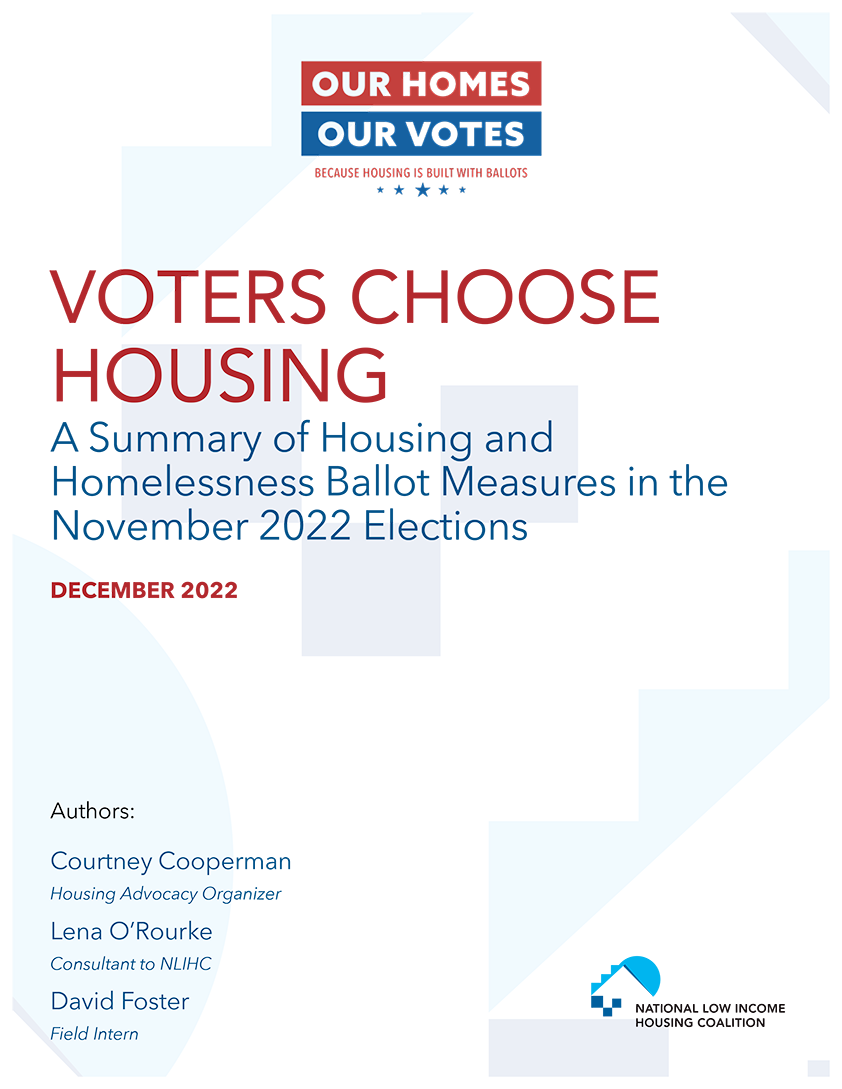New Report! Voters Choose Housing: A Summary of Housing and Homelessness Ballot Measures in the November 2022 Elections
Dec 15, 2022
NLIHC today released a new report, Voters Choose Housing: A Summary of Housing and Homelessness Ballot Measures in the November 2022 Elections. The report gives an overview of nearly 100 ballot measures that devote new resources to affordable housing, strengthen tenant protections, respond to homelessness, amend zoning and land use policies, facilitate affordable housing development, and tax or regulate short-term rentals (STRs). Case studies from ballot measure campaigns in Florida, California, New York, and Colorado provide a glimpse into the inner workings of ballot measure campaigns, ideas about successful organizing tactics, and key lessons learned.
This year, most temporary protections and resources provided during the COVID-19 pandemic expired or were depleted, just as rents and other costs increased. Advocates, impacted people, and organizers demanded action, putting heightened pressure on state and local leaders across the country to address the affordable housing crisis. Organizers and local elected officials turned to ballot measures as a pathway to secure new resources and keep renters stably housed.
Key highlights from the report include the following:
- Voters approved measures to establish rent stabilization or strengthen existing rent stabilization ordinances in every community where they had the opportunity to do so.
- Across every region of the country, voters collectively authorized nearly $2 billion in bonds for affordable housing development, acquisition, and rehabilitation.
- Other successful mechanisms to raise revenues for affordable housing included real estate transfer fees, vacancy taxes, sales taxes, property taxes, business taxes, and redirection of existing tax revenues into affordable housing.
- Measures to tax short-term rentals (STRs), establish lodging taxes to fund housing programs, and reinvest existing lodging tax revenues into affordable housing were overwhelmingly successful. Strict regulations on STRs, however, were unpopular among voters.
- Zoning and land use ballot measures, which were concentrated in California, saw mixed results. Some communities rejected proposals that would have imposed obstacles to new affordable housing projects, while these restrictive proposals were successful in other communities.
- Not all successful ballot measures were helpful in addressing the housing crisis. The passage of Measure O in Sacramento, which criminalizes unsheltered homelessness, raises concerns that interest groups will again pursue ballot measures as a mechanism to enact misguided policies that fail to meaningfully address homelessness. Housing and homelessness advocates should be prepared to respond to future efforts to criminalize homelessness via ballot measures.
Overall, it is clear: voters said yes to affordable housing at the ballot box. The widespread success of housing and homelessness ballot measures send a strong message to elected officials: housing is a winning issue and transcends partisan divides. The election results should encourage policymakers on both sides of the aisle to champion affordable housing and inspire housing advocates to pursue ballot measures as a pathway to enact housing solutions.
